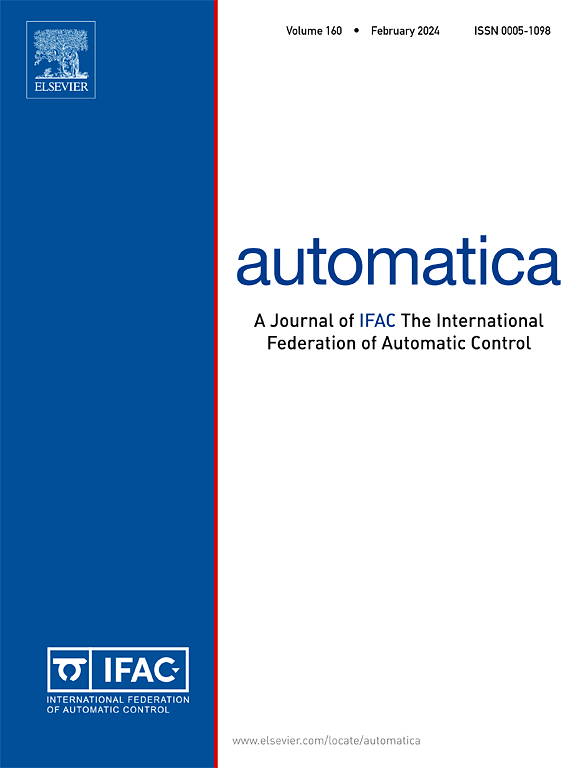Wiener-Hammerstein系统正则化Volterra级数辨识的核设计
IF 4.8
2区 计算机科学
Q1 AUTOMATION & CONTROL SYSTEMS
引用次数: 0
摘要
人们对基于核的正则化方法的Volterra级数辨识越来越感兴趣。主要难点在于内核设计和相应实现的效率。在本文中,我们首先假设待辨识的底层系统是具有多项式非线性的Wiener-Hammerstein (WH)系统。然后,我们展示了如何通过考虑线性块的先验知识和WH系统的结构,为Volterra地图设计具有非零非对角线块的核。此外,探索设计核的结构会导致与最先进的结果相同的计算复杂度,即O(N3),其中N为样本量,但显著不同的是,所提出的核是以直接和灵活的方式设计的。此外,对于核和一类广泛使用的输入信号的特殊情况,进一步探索输出核矩阵的可分结构可以将计算复杂度从O(N3)降低到O(Nγ2),其中γ是输出核矩阵的可分秩,可以比n小得多。我们最后运行蒙特卡罗模拟来验证所提出的核和得到的理论结果。本文章由计算机程序翻译,如有差异,请以英文原文为准。
On kernel design for regularized Volterra series identification of Wiener–Hammerstein systems
There have been increasing interests in the Volterra series identification with the kernel-based regularization method. The major difficulties are on the kernel design and efficiency of the corresponding implementation. In this paper, we first assume that the underlying system to be identified is the Wiener–Hammerstein (WH) system with polynomial nonlinearity. We then show how to design kernels with nonzero off-diagonal blocks for Volterra maps by taking into account the prior knowledge of the linear blocks and the structure of WH systems. Moreover, exploring the structure of the designed kernels leads to the same computational complexity as the state-of-the-art result, i.e., , where is the sample size, but with the significant difference that the proposed kernels are designed in a direct and flexible way. In addition, for a special case of the kernel and a class of widely used input signals, further exploring the separable structure of the output kernel matrix can lower the computational complexity from to , where is the separability rank of the output kernel matrix and can be much smaller than . We finally run Monte Carlo simulations to demonstrate the proposed kernels and the obtained theoretical results.
求助全文
通过发布文献求助,成功后即可免费获取论文全文。
去求助
来源期刊

Automatica
工程技术-工程:电子与电气
CiteScore
10.70
自引率
7.80%
发文量
617
审稿时长
5 months
期刊介绍:
Automatica is a leading archival publication in the field of systems and control. The field encompasses today a broad set of areas and topics, and is thriving not only within itself but also in terms of its impact on other fields, such as communications, computers, biology, energy and economics. Since its inception in 1963, Automatica has kept abreast with the evolution of the field over the years, and has emerged as a leading publication driving the trends in the field.
After being founded in 1963, Automatica became a journal of the International Federation of Automatic Control (IFAC) in 1969. It features a characteristic blend of theoretical and applied papers of archival, lasting value, reporting cutting edge research results by authors across the globe. It features articles in distinct categories, including regular, brief and survey papers, technical communiqués, correspondence items, as well as reviews on published books of interest to the readership. It occasionally publishes special issues on emerging new topics or established mature topics of interest to a broad audience.
Automatica solicits original high-quality contributions in all the categories listed above, and in all areas of systems and control interpreted in a broad sense and evolving constantly. They may be submitted directly to a subject editor or to the Editor-in-Chief if not sure about the subject area. Editorial procedures in place assure careful, fair, and prompt handling of all submitted articles. Accepted papers appear in the journal in the shortest time feasible given production time constraints.
 求助内容:
求助内容: 应助结果提醒方式:
应助结果提醒方式:


